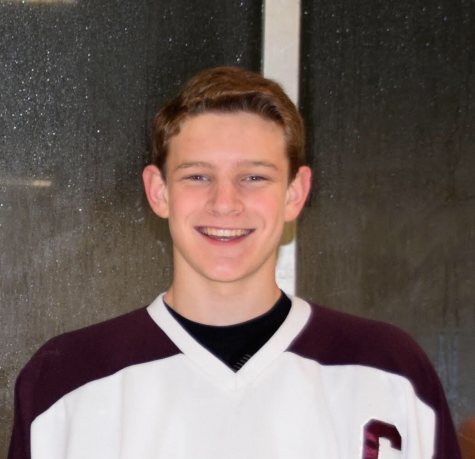Overcoming Inertia: Why We Must Return To School
February 8, 2021
Inertia, as I learned during my in-person physics class, is the tendency of mass to resist acceleration, or, more broadly, the tendency to resist change. Right now, too many Scarsdale High School students are victims of inertia.
When I walk into class in the morning, if I’m lucky, the group joining me is barely large enough to form a basketball team. In some classes, we’d be stuck with a doubles tennis team. This was inconceivable at the start of the year, when I rarely saw more than one student per class exiled to the SMART board, usually for health or family reasons. They missed out on all the fun parts of school, and if their misfortune wasn’t broadcast in front of the class then they were stuck on a front-facing computer screen where I forgot about them entirely. I thought that nobody, nobody would voluntarily put themselves in that position.
What changed? Fall sports began siphoning off quarantine-averse athletes while rising cases hit the rest of us with a reality check about what quarantine guidelines really entailed. In-school attendance then plummeted, until the building seemed almost empty. After a few months, however, sports ended, new information told us the virus does not transmit well in classroom conditions, and quarantine guidelines were relaxed. Curiously, in-person attendance hasn’t returned close to September levels—just 53% of us come to school, down from about 80% originally.
It’s possible that shifting attitudes towards COVID account for this phenomenon: over time, more families are affected, or know someone who has been affected, so more students stay home. But this theory tells an incomplete story. Many students who stay home during the week regularly enter unsafe environments on the weekend, while a whopping one in ten students are officially “hybrid” but simply do not show up. Extra COVID precautions may keep some students home, but for the rest? Apparently, we went virtual due to now-obsolete circumstances, and then we just… stayed put. Inertia.
On Tuesday—our “snow” day—I felt the pull myself. I woke up late, hopped from Zoom to Zoom, checked off a few homework assignments, and flicked on Arrested Development, all within the warmth of my house. If I had switched to remote learning earlier this year, I imagine I’d quickly find myself caught in my bedroom’s gravitational field. It’s all too easy to replace in-class questions with Google search, hallway discussions with Instagram, the fresh air outside the Brewster entrance with a hit of a new Netflix binge. As media expands to fill all available time, we feel occupied and placated, but we are trapped. And, predictably, just as my routine changed on Tuesday, so too did my energy dip, my productivity lag, my eyes ache, and my snack drawer empty.
It’s sad to see. It’s especially sad from my perspective as a senior; I will probably never interact face-to-face with many of my classmates again (literally, in my entire life). But it’s mostly sad as a member of the Scarsdale community. When I go to class and stare at all the boxes on the board, I don’t see the student body that once vehemently defended its mental health against cross-cohort streaming. I see a student body that has one clear strategy to fend off the flank of this pandemic but has instead decided to surrender. Those students who once drove to school at night to fight for less screen time are now parked in front of a screen all day. Voluntarily.
In-person learning is also crucial for physical health—on an individual level, by getting us off the couch, but far more importantly on a community-wide level. High classroom attendance would create a sustainable COVID-safe lifestyle, where social interaction and learning occur consistently and safely throughout the week and the restlessness that pushes many students into unsafe conditions on the weekend is considerably reduced. Unfortunately, this sustainability evaporates when too few students attend school: remote students receive none of the benefits of classroom learning, while hybrid students get a watered down version of the socially and educationally rich experience they woke up a half-hour earlier for. The system only works if we go to school and make it work.
Of course, this raises the question of why the student body has been left to make or break the hybrid system in the first place. The administration needs to do a better job getting students to school. To be sure, the recent video from Principal Bonamo is a good start, but we do not look to the administration to use persuasive power (which is a job for, say, an opinion editor of Maroon); we look to the administration to use administrative power. We need to reorganize the system—or, more accurately, reinstate it. We need to require in-person students to be in-person students, and we need to require virtual students to present some, any, justification for their decision to stay home. Yes, individual students have the power to improve their own life astronomically by coming to school, but the law of inertia tells us that an object will stay put unless acted on by an outside force; to create substantial community-wide change, the administration must act as that outside force.


